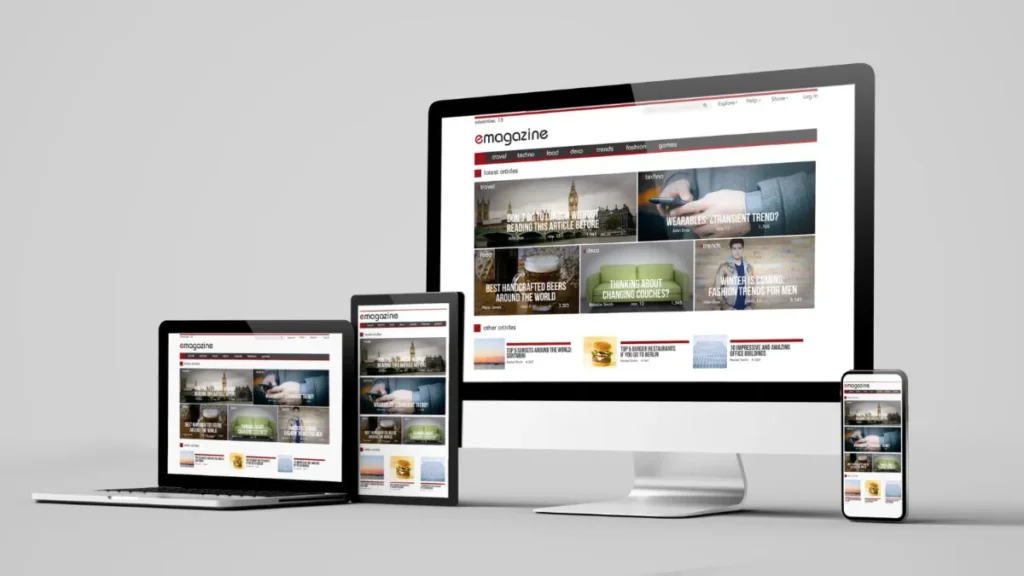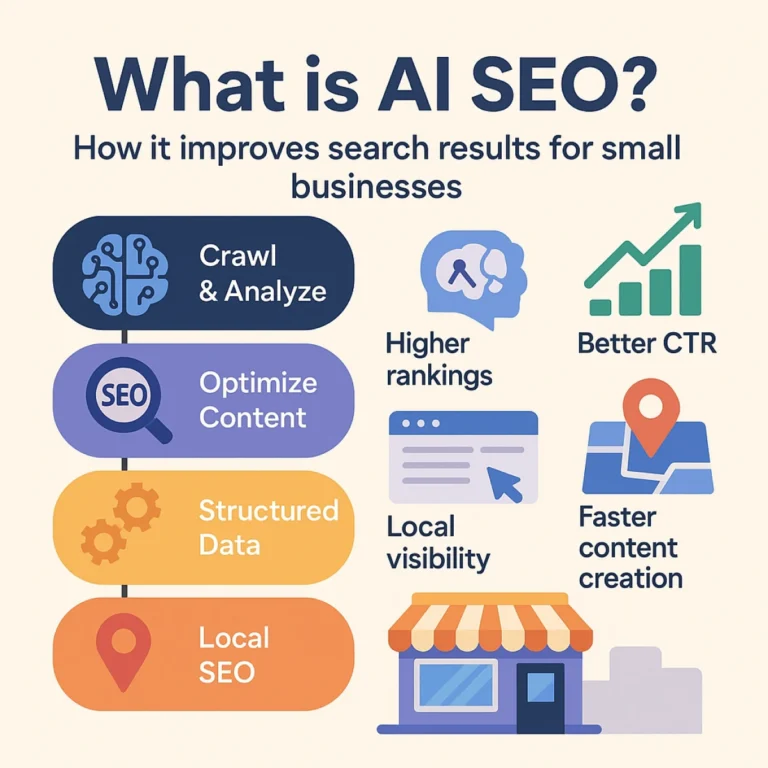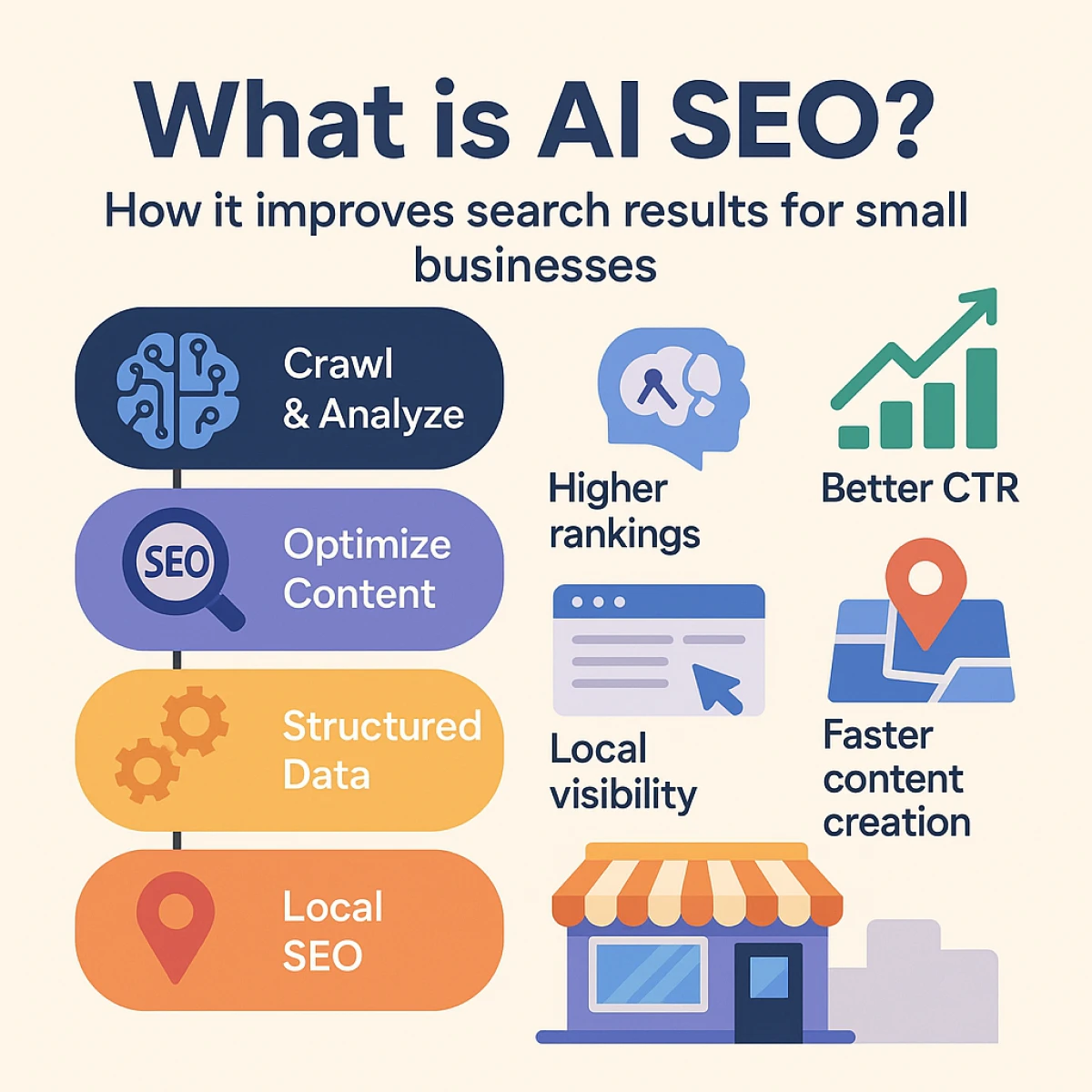Define Your Website Goals

Clarify your main goal
The foundation of a website that works starts with identifying your main conversion objective or the most important action you want visitors to take. Your website should guide users to outcomes that matter to your business such as generating sales, collecting leads, or building an email list. Ask yourself, “What’s the #1 action I want visitors to take?” This could be many things!
- Completing a purchase
- Submitting a contact form
- Signing up for a newsletter
- Downloading resources
- Booking an appointment
Understanding the difference between primary and secondary conversions is very important. Primary conversions directly contribute to revenue, like making a purchase while secondary conversions move users closer to primary goals such as subscribing to a blog.
Match goals with your business model
Your website goals must support your broader business objectives. This arrangement creates a digital roadmap that serves as your GPS and helps you reach your destination. Take time to revisit your company’s core mission and vision. What meaningful impact do you want to create? This overarching purpose will guide your goal-setting process. Your website is part of your bigger business ecosystem. It shouldn’t exist in isolation.
Building Brands Marketing suggests getting a full picture of your current online presence. Does your website communicate your value proposition? Can visitors find the path to conversion easily?
Set measurable KPIs for success
Specific KPIs help determine your website’s performance. These measurements reveal how visitors interact with your website and whether you attract the right customer segment.
Metrics like sessions, page views, and time spent on page might look impressive but often lack real insight. Focus on metrics that show actual business outcomes. The SMART framework helps in setting KPIs!
| Specific | Measurable | Achievable | Relevant | Time-bound |
|---|---|---|---|---|
| Define goals with clear language | Select goals with trackable metrics | Set hard but realistic goals | Make sure goals support your overall mission | Attach specific deadlines to each goal |
Note that KPIs should reflect your organization’s goals. Start with two or three meaningful metrics instead of drowning in data.
Understand Your Audience and Their Needs

Identify your ideal customer profile
An ideal customer profile (ICP) provides a clear picture of who benefits most from your products or services. Your ICP targets specific individuals most likely to convert, unlike a broad target market.
Building Brands Marketing suggests starting with your existing customer base. You should look for patterns among your best customers. The analysis should include both demographic information (age, location, income) and psychographic data (interests, attitudes, pain points).
The next step involves creating detailed buyer personas, fictional representations of your ideal customers. These personas should include simple traits and psychographic aspects like attitudes, fears, and motivations. This approach reduces customer acquisition costs and increases retention.
Map user intent to website structure
| Informational Intent | Navigational Intent | Transactional Intent | Commercial Intent |
|---|---|---|---|
| Users seeking to learn something | Users looking for a specific brand or page | Users ready to make a purchase or take action | Users comparing products before buying |
Use language and visuals that strike a chord
Design for Usability and Trust

Ensure mobile responsiveness
Simplify navigation and layout
Use consistent branding and colors
Visual consistency builds trust and recognition. Your brand colors, typography, and design patterns should stay consistent on all pages. This helps visitors know they’re in the right place. Such consistency shows reliability and attention to detail.
Small businesses can use color strategically to create intuitive navigation cues. A well-planned color palette does more than look good – it guides customers where to click, what to read first, and helps them spot important information.
Display trust signals like SSL and badges
Visual elements that boost your site’s credibility are trust signals. Security indicators reassure visitors about their data safety. An SSL certificate (the padlock icon in browsers) becomes important for form submissions and checkout flows.
There are other important trust signals though!
- Payment provider logos (Visa, Mastercard, PayPal)
- Security seals from providers like Norton or McAfee
- Privacy policy and terms of service
- Compliance badges (GDPR/CCPA)
These elements work best near conversion points where users might hesitate.
Highlight testimonials and reviews
Create Content That Drives Action

Write clear and benefit-driven headlines
Good headlines show value right away instead of trying to be clever. Research proves that headlines focused on benefits work better than those highlighting features. They connect with customers by showing what’s valuable to them.
Your headlines should:
- Solve specific customer problems
- Include odd numbers for lists
- Show exact numbers
- Compare benefit-driven vs. feature-driven lines
Use strong calls to action (CTAs)
CTAs help convert visitors by guiding them toward specific actions. Using a single CTA can boost clicks a lot. Your CTAs need to have a few things!
- Action-packed (with verbs like “get,” “buy,” or “download”)
- Easy to spot with contrasting colors
- Placed next to testimonials or after building interest
- Customer-focused rather than brand-focused
Incorporate social proof and case studies
Social proof turns marketing claims into believable evidence. Case studies show how your product works in real-life scenarios. This helps potential customers picture their own success story. The best case studies include three key parts!
- Your customer’s problem
- How your solution helped
- The actual results they got
Add a blog to build authority
Optimize and Test for Better Results

Improve page load speed
Page speed affects both user experience and search rankings. Bounce rates jump when loading times increase from one to three seconds. Google’s PageSpeed Insights can help you measure your current performance. There are a few quick ways to improve speed!
- Compress images without losing quality
- Enable browser caching to store page elements
- Minimize CSS and JavaScript files
- Reduce HTTP requests by combining files
Implement SEO best practices
Use A/B testing to refine elements
A/B testing helps you compare two webpage versions to find the better performer. Random visitors see different variants while you measure which version achieves better conversion goals. Test these elements in your trials!
- Headlines and copy variations
- CTA button colors, text, and placement
- Page layouts and visual elements
- Form fields and checkout processes
Track performance with analytics tools
Do You Need Website Development?
Website Development FAQs
How important is mobile responsiveness for a small business website?
Mobile responsiveness is crucial for small business websites. With over 62% of global website traffic coming from mobile devices, ensuring your site adapts seamlessly to all screen sizes is essential. A mobile-responsive design helps capture the majority of potential customers and improves overall user experience.
What are some effective ways to build trust on a small business website?
To build trust on your website, use consistent branding and colors, display trust signals like SSL certificates and security badges, and highlight customer testimonials and reviews. These elements reassure visitors about your credibility and the safety of their data, especially near conversion points.
How can I create compelling calls-to-action (CTAs) for my website?
Effective CTAs should be action-oriented, visually distinct with contrasting colors, and user-focused. Use verbs like “get,” “buy,” or “download” and place them strategically near testimonials or after building interest. Focus on a single, clear CTA per page to increase clicks and potential sales.
Why is it important to define website goals for a small business?
Defining clear website goals is crucial because it provides direction and helps align your online presence with your business objectives. By identifying your primary conversion objective, you can guide visitors towards actions that matter most to your business, such as generating sales, collecting leads, or building an email list.
How can A/B testing improve my website’s performance?
A/B testing allows you to compare two versions of a webpage to determine which performs better in terms of conversions. By testing elements like headlines, CTA buttons, page layouts, and form fields, you can refine your website based on data-driven insights, leading to improved user experience and higher conversion rates.







